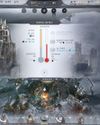
If we learned nothing else from Naughty Dog’s PC version of The Last of Us Part 1, we now know that in the year 2023 it’s still eminently possible to mess up a videogame port. We can run the global economy on a decentralised blockchain and climb mountains in photorealistic VR, but good luck getting TLOU to build its shader cache before Steam’s refund window expires.
Prior to that release, you could have been forgiven for thinking the days of borked PC ports were basically behind us. It was absolutely de rigueur throughout the ’90s and ’00s for a critically adored console game to turn up in mangled and mutilated form, and as recently as Dark Souls’ PC arrival in 2012 we were disappointed but far from surprised by a locked 720p resolution and 30fps frame rate.
But things were on the up. Console architecture was coming slightly closer in line with a PC’s componentry ecosystem by the advent of the PS4 and Xbox One, the latter using Microsoft’s DirectX API and both using an eight-core AMD Jaguar APU that bore some similarities to the Ryzen chips found in gaming PCs. And anecdotally, that seemed to be making life easier for the developers of 2013 than it was for their ancestors circa 2003 who were charged with getting the complex infrastructure of lolly sticks and elastic bands inside PS2s and Xboxes to power virtual worlds, and then translate all that over to beige boxes.
MOVING GOALPOSTS
Bu hikaye PC Gamer US Edition dergisinin August 2023 sayısından alınmıştır.
Start your 7-day Magzter GOLD free trial to access thousands of curated premium stories, and 9,000+ magazines and newspapers.
Already a subscriber ? Giriş Yap
Bu hikaye PC Gamer US Edition dergisinin August 2023 sayısından alınmıştır.
Start your 7-day Magzter GOLD free trial to access thousands of curated premium stories, and 9,000+ magazines and newspapers.
Already a subscriber? Giriş Yap

"The War Within itself has kept me coming back most evenings too"
WORLD OF WARCRAFT remains my jailer, and I couldn't be more pleased about it

OK BUILDER
SATISFACTORY is the new titan in building and crafting games

HELL YES
DIABLO IV: VESSEL OF HATRED is a transformative expansion

MOUSE: PI FOR HIRE
This mouse wants to be more than just a gimmick

WINDBLOWN
Dead Cells dev's new roguelike has me afraid for my free time

NO MORE ROOM IN HELL 2
As the zombie horde surrounded me just moments after taking down my two remaining teammates, the writing was really on the wall. Armed with just a chef's knife, it was clear I stood no chance, but I was going down swinging, hoping for a miracle... it didn't come.

OWNED BY STEAM
VALVE cordially reminds you that your games aren't yours

CURSE OF THE AZURE BONDS
These classic games haven't aged badly, but I sure have.

DEEP FREEZE
Endure a blizzard of tough choices and rough consequences in FROSTPUNK 2

NEW HORIZONS
Building up REMNANT 2 outside the live service game grinder